DRUG AND SUBSTANCE ABUSE IN 2018
Hello everyone, its morning at this side o the world. I have a very serious issues to discuss this more
its a new year and i feel bad about it already, many of our youths are indulging in various act of drug and substance abuse.
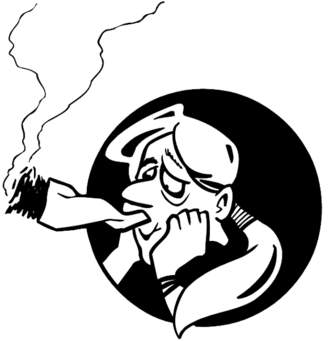
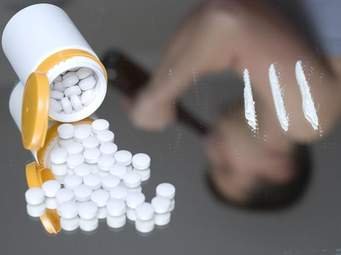
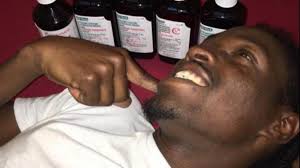
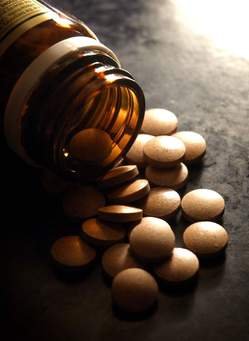
I have been observing some societal phenomena of the younger hemisphere. the issue of drugs ans substance abuse has skyrocketed last year than any other year. The statistics government and concerned bodies gathered is very alarming.
drug abuse has never been recorded this high ever before and government are not ding anything meaningful to curb this cancerous menace.
In Kano, a northern state in Nigeria, over 70 million Nigerian naira ( the local currency which equates to about $2 million ) was used to purchase codeine- a cough syrup which slows down its user physical activities after intake and makes he or she ''high". It is sometimes diluted with carbonated drinks with high caffeine content- in the last 3 months!
Am sorry to say, the Government has failed us in a number of ways and this is a big chunk of its percentage
There's a rumor going on that the life expectancy of an average Nigerian man of the age bracket 18 to 25 is 42.8 years. even if this is nit true, it is near the truth.
it is now the custom of party or get together to share this substances freely. it has gotten to a stage of no fear of reprimand from anyone, any teenager that doesn't engage in stuffs like this are labelled as "uncivilized". this now the yardstick for measuring the level of exposure amongst our youth
The entertainment industry, both foreign and local, have glorified the usage of these substances in their songs and subsequently in their videos, drinking and adverting these illicit drugs openly!
WHAT ARE WE DEALING WITH??
What Is Drug Addiction?
Drug addiction is a chronic, often relapsing brain disease that causes
compulsive drug seeking and use, despite harmful consequences to the
drug addict and those around them. Drug addiction is a brain disease
because the abuse of drugs leads to changes in the structure and function
of the brain. Although it is true that for most people the initial decision to take
drugs is voluntary, over time the changes in the brain caused by repeated drug
abuse can impair a person's self-control and ability to make sound decisions, and
at the same time create an intense impulse to take drugs.
It is because of these changes in the brain that it is so challenging for a person
to stop abusing drugs. Fortunately, there are treatments that help people to
counteract addiction's powerful disruptive effects and regain control of their lives.
Research shows that combining addiction treatment medications, when appropriate,
with behavioral therapy is the best way to ensure success for most patients.
Treatment approaches that are tailored to each patient's drug abuse patterns and
any concurrent medical, psychiatric, and social problems can help achieve sustained
recovery and a life without drugs.
Substance use disorders are a class of psychological disorder in which a person continues to use a substance, despite having significant health, social, or other negative consequences as a result of their substance use.
What is a substance, anyway?
In the context of substance use disorders, substances are groups of drugs that have similar effects on your brain, body, and behavior. There are 10 classes of substances considered when diagnosing a substance use disorder:
• Alcohol: beer, wine, liquor
• Caffeine: coffee, tea, kola nut
• Cannabis: marijuana, hashish, hash oil
• Hallucinogens: phencyclidine (PCP), d-lysergic acid diethylamide (LSD), psilocybin (magic mushrooms), peyote
• Inhalants: inhaled spray paints, markers, glues
• Opioids heroin, prescription pain-killers, methadone
• Sedatives, hypnotics, or anxiolytics: barbiturates, benzodiazepines, antihistamines
• Stimulants: cocaine, amphetamines, other stimulants
• Tobacco: cigarettes, cigars, snuff, chewing tobacco, e-cigarettes
• Other (or unknown)
These groupings aren’t perfectly distinct (many drugs fall into more than one category), but can be helpful in understanding how the characteristics of each drug make it more or less likely to be used in excess.
What makes a substance addictive?
The common characteristic of all addictive substances is that they activate the brain’s reward system, either directly or indirectly.
The primary role of the reward system is to encourage you to satisfy the needs important for survival (eating, drinking, having sex). Although the system itself is complex, it operates on a simple principle: if doing something feels good, you’re more likely to do it again. When your needs are met, a region in the midbrain called the ventral tegmental area (VTA) releases a little surge of the chemical dopamine, which makes you feel satisfaction and pleasure. The VTA sends dopamine to several areas of the brain, including:
• Amygdala: sensing and expressing emotions
• Nucleus accumbens: motor control
• Hippocampus: memory formation
• Prefrontal cortex: attention and planning behavior
These brain regions respond to the dopamine surge in ways that guide your memory, attention, and behavior toward repeating whatever triggered the pleasurable chemical release. The shape and function of your brain literally changes as a result of these reactions!.
Always remember: Cells that fire together (in response to the presence of dopamine) wire together (strengthen their connections, so its easier to fire together in the future).
Common Drugs and Substances Abused
Marijuana Abuse
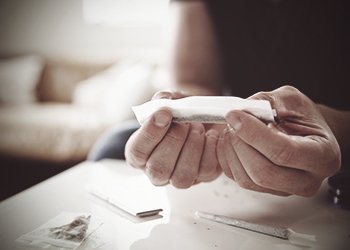
Though illegal to use or have possession of, marijuana is a commonly abused drug and many people are unaware of its harmful effects. Marijuana abuse can lead to distorted perceptions , impaired coordination as well as difficulty with thinking , problem solving, learning and with memory.
Those affected by marijuana addiction can find help in outpatient programs. Medication can be prescribed to reduce marijuana withdrawal symptoms.
Talk therapy and rest are usually the best practices for this particular addiction treatment.
Alcohol Abuse

Although legal to use, obtain and possess, alcohol is another commonly abused drugs with the potential for serious consequences. Alcohol abuse manifests as drinking becomes increasingly important and takes priority over everything else of importance, including job, friends and family. It can present a danger to ones' self and others, as alcohol abuse increases.
The physical and emotional effects of alcohol abuse can often impair judgement to a dangerous level. While some people are able to maintain this pattern for a long amount of time, alcohol abusers are at risk for progressing to alcoholism.
Cocaine

Cocaine is an illicit or illegal commonly abused drug. Cocaine abuse can lead to addiction, severe health problems and death. Many cocaine abusers report to be trapped in a vicious cycle of increased cocaine abuse in failed attempts to recreate the pleasurable sensations of their first exposure to cocaine. Due to the intense cravings and high relapse rate associated with cocaine addiction, recovery in a supportive environment, such as residential treatment centers, provide the recovering addict much more support than private or outpatient therapy.
In most cases, the cocaine addict will attend outpatient therapy after completing residential cocaine addiction treatment for continued support. In conjunction with outpatient therapy, most addicts are urged to attend 12 step support groups to augment their commitment to recovery.
Valium Abuse
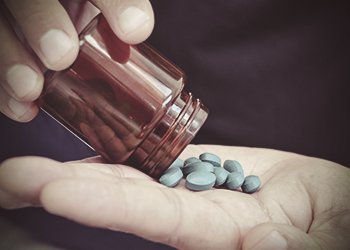
Valium is a commonly abused drug that requires a doctor's prescription to legally obtain and use. Valium abuse, if continued over a long period of time, will lead to tolerance of the drug. When this occurs, larger doses of Valium will be needed in order to produce the same effects. Additionally, Valium abuse can lead to physical dependence which means that withdrawal will occur when the Valium abuse is reduced or stopped suddenly and it can be very dangerous.
In many cases withdrawal can be easily managed by a qualified healthcare provider in a medically-based detox facility, but treating withdrawal is not the same as treating addiction. Drug addiction can be effectively treated with behavioral-based therapies once medical stabilization has been achieved in drug detox.
Heroin Abuse

Heroin is an illegal commonly abused drug which is extremely harmful to the user and to society. Heroin abuse often leads to heroin addiction which is one of the hardest drug addictions to beat. Heroin is one of the worst drug addictions and one of the hardest to break, causing the most damage both physically and mentally.
Heroin related deaths are not uncommon and may come as a result of taking a mixture of drugs. All drug addictions that have to do with heroin need to be treated on an inpatient basis at a qualified addiction treatment center.
Percocet Abuse
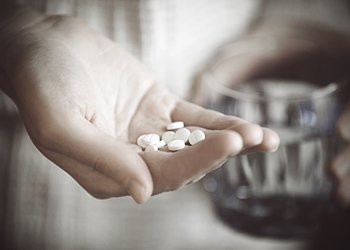
Percocet is a commonly abused drug that requires a doctor's prescription to legally obtain and use. If Percocet abuse takes place there is the potential for physical dependence and addiction. Those who abuse Percocet may try to enhance the euphoric effects, while at the same time increasing the risk for serious medical consequences, such as overdose. A useful precursor to long-term treatment of opioid addiction is detoxification.
Detox itself is not a treatment. Rather, its primary objective is to relieve withdrawal symptoms while the patient adjusts to being drug free. To be effective, detox must be followed by long-term treatment that either requires complete abstinence or incorporates a medication, such as methadone or buprenorphine, into the treatment program.
Prescription Drug Abuse
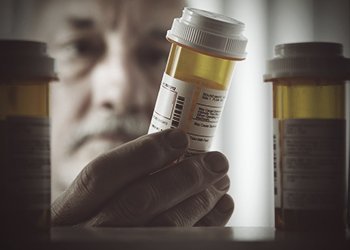
Prescription drug abuse can refer to the intentional misuse of a drug without a written prescription from a doctor. Because certain prescription drugs induce a state of euphoria in addition to relieving pain, they are popular street drugs for intentional prescription drug abuse.
Some people have legitimate reasons for taking these controlled substances. Doctors will prescribe very strong opiate drugs to manage debilitating or chronic pain problems. Though they play a critical role in pain management, opiates aren't appropriate for all pain. Treatment needs to be tailored depending on a patient's specific condition and physician supervision is critical to avoid prescription medication abuse and addiction.
Physical dependence, which is sometimes unavoidable, develops when an individual is exposed to a drug at a high enough dose for long enough that the body adapts and develops a tolerance for the drug. This means that higher doses are needed to achieve a drug's original effects and if the patient stops taking the drug, withdrawal will occur. But the development of physical dependence doesn't necessarily lead to addiction in all cases. It means that the individual can't just stop taking the drug. Instead the dose has to be tapered off to gradually decrease a drug's amount over time to prevent withdrawal reactions.
SUBSTANCE ABUSE IN NIGERIA
THE use of mind altering substances of natural origin has been known since the prehistoric times. For centuries, man has tried to either complement some pleasant features of life or escape from the unpleasantness of life, whether real or imaginary, by using fermented liquor and different plant products.
Drinking of palm wine and locally brewed alcohol such as “ogogoro”, “burukutu” as well as chewing of different stimulating plants and their products in Nigeria have been known for ages. Reports have it that the use of these substances was more of occasional and in moderation with few exceptions. This was the trend of substance use in Nigeria until after the Second World War in the 40s when cannabis (hemp) was introduced through the war veterans who brought back the cannabis seed from India. The 70s and 80s witnessed the introduction of other drugs like cocaine, heroin, amphetamines and pharmaceutical opioids (codeine, morphine etc). This trend changed dramatically in the 90s to include the abuse of non conventional drugs such as volatile solvents or inhalants (gasoline, correction fluid, rubber solution, aerosol, nail polish removal, kerosene, petrol, and bytul nitrate). These volatile solvents produce psychoactive vapour which when inhaled goes straight from the nose to the brain, heart and lungs with instant intoxication and diverse consequences. Today, ingenuity has been introduced into drug abuse with complex mixtures, experimentations and new discoveries. This has resorted to the abuse of lizard dung (especially the whitish part), pit toilet/soak away fumes (bio generic gas), “goskolo” a concoction of unimaginable substances, robin blue powder cocktail, “gadagi” (a substance resembling tea leaves), pharmaceutical products (tramadol, rohypnol) and many more.
THE NEW KING PIN
Codeine
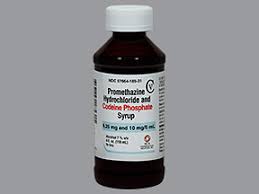
![]()
Codeine is an opiate used to treat pain, as a cough medicine, and for diarrhea. It is typically used to treat mild to moderate degrees of pain. Greater benefit may occur when combined with paracetamol (acetaminophen) or a nonsteroidal anti-inflammatory drug (NSAID) such as aspirin or ibuprofen. Evidence does not support its use for acute cough suppression in children or adults. In Europe it is not recommended as a cough medicine in those under twelve years of age. It is generally taken by mouth. It typically starts working after half an hour with maximum effect at two hours. The total duration of its effects last for about four to six hours.
Common side effects include vomiting, constipation, itchiness, lightheadedness, and drowsiness. Serious side effects may include breathing difficulties and addiction. It is unclear if its use in pregnancy is safe. Care should be used during breastfeeding as it may result in opiate toxicity in the baby. Its use as of 2016 is not recommended in children. Codeine works following being broken down by the liver into morphine. How quickly this occurs depends on a person's genetics.
Medicinal
Codeine is an opiate used to treat pain, as a cough medicine, and for diarrhea. It is typically used to treat mild to moderate degrees of pain. Wikipedia
Formula: C18H21NO3
IUPAC ID: (5α,6α)-7,8-didehydro-4,5-epoxy- 3-methoxy-17-methylmorphinan-6-ol
Onset of action: 15–30 minutes
Duration of action: 4–6 hours
Biological half-life: 2.5–3 hours
Bioavailability: By mouth: ~90%
Soluble in: Water
Codeine containing cough syrup mixed with soft drinks is gradually taking over alcohol in youth parties. Due to new technologies which have improved the mass production of some of these drugs, many of them have become very cheap and therefore affordable.
Unfortunately, the presence of new substances of abuse are usually not detected until someone suffering from the consequences visits the hospital for treatment or law enforcement personnel intercept or seize a supply of suspected substances. Substance abuse in Nigeria and the new trend is becoming a significant medical, psychological, social and economic problem facing the nation. More worrisome is the increasing number of secondary school and tertiary institution students who are getting involved in drug abuse. These are the future leaders of Nigeria. What will the future of the nation be if it’s supposedly future leaders are drug addicts?
Five major predisposing factors to drug abuse among students are
- peer pressure,
- curiosity,
- ignorance,
- academic induced frustration and
- lack of parental care.
Adolescence and young adult are characterized by new identities/peer selection, adventurism, curiosity, excitement and role confusion. Where students are not well guided, either by the home or school, they choose wrong peers which will lead to experimenting with drugs. Also, the storm and stress of life such as academic workload, learning to be independent from parents put them under pressure to find solace in drugs.
In some cases, they take drugs to have momentary relief and out of ignorance of the consequences. Some have been initiated by peers without knowing what they took. They would probably notice that they felt differently and would want to have a similar feel. Before they realize what they are taking, they would have been addicted to a particular substance of abuse. That is why some cannot tell you exactly the name of the substance they took until they go for drug test. In some cases, they mention a substance of abuse whose effect is a contrast to their behavior.
The consequences of drug abuse by students include
- extreme violence,
- gang rape,
- drug induced suicide,
- paranoia, poor academic performance,
- larceny (to feed the habit),
- school dropout, poor health condition,
- indebtedness and
- waste of resources (money and material).
Drug abuse is also associated with anti social vices among students such as cultism, thuggery, racketeering, and armed robbery. This means that the problem of drug abuse among students is the problem of everyone – the parents, the school, other students and the general public. Addressing drug problem among youths in institutions of learning therefore, requires collective efforts. Some institutions have put in place policies against drug abuse by students.
Many people don't understand why or how other people become addicted to drugs. They may mistakenly think that those who use drugs lack moral principles or willpower and that they could stop their drug use simply by choosing to. In reality, drug addiction is a complex disease, and quitting usually takes more than good intentions or a strong will. Drugs change the brain in ways that make quitting hard, even for those who want to. Fortunately, researchers know more than ever about how drugs affect the brain and have found treatments that can help people recover from drug addiction and lead productive lives.
What Is Drug Addiction?
Addiction is a chronic disease characterized by drug seeking and use that is compulsive, or difficult to control, despite harmful consequences. The initial decision to take drugs is voluntary for most people, but repeated drug use can lead to brain changes that challenge an addicted person’s self-control and interfere with their ability to resist intense urges to take drugs. These brain changes can be persistent, which is why drug addiction is considered a "relapsing" disease—people in recovery from drug use disorders are at increased risk for returning to drug use even after years of not taking the drug.
It's common for a person to relapse, but relapse doesn't mean that treatment doesn’t work. As with other chronic health conditions, treatment should be ongoing and should be adjusted based on how the patient responds. Treatment plans need to be reviewed often and modified to fit the patient’s changing needs.
What happens to the brain when a person takes drugs?
Most drugs affect the brain's "reward circuit" by flooding it with the chemical messenger dopamine. This reward system controls the body's ability to feel pleasure and motivates a person to repeat behaviors needed to thrive, such as eating and spending time with loved ones. This over-stimulation of the reward circuit causes the intensely pleasurable "high" that can lead people to take a drug again and again.
As a person continues to use drugs, the brain adjusts to the excess dopamine by making less of it and/or reducing the ability of cells in the reward circuit to respond to it. This reduces the high that the person feels compared to the high they felt when first taking the drug—an effect known as tolerance. They might take more of the drug, trying to achieve the same dopamine high. It can also cause them to get less pleasure from other things they once enjoyed, like food or social activities.
Long-term use also causes changes in other brain chemical systems and circuits as well, affecting functions that include:
• learning
• judgment
• decision-making
• stress
• memory
• behavior
Despite being aware of these harmful outcomes, many people who use drugs continue to take them, which is the nature of addiction.
Why do some people become addicted to drugs while others don't?
No one factor can predict if a person will become addicted to drugs. A combination of factors influences risk for addiction. The more risk factors a person has, the greater the chance that taking drugs can lead to addiction. For example:
• Biology. The genes that people are born with account for about half of a person's risk for addiction. Gender, ethnicity, and the presence of other mental disorders may also influence risk for drug use and addiction.
• Environment. A person’s environment includes many different influences, from family and friends to economic status and general quality of life. Factors such as peer pressure, physical and sexual abuse, early exposure to drugs, stress, and parental guidance can greatly affect a person’s likelihood of drug use and addiction.
• Development. Genetic and environmental factors interact with critical developmental stages in a person’s life to affect addiction risk. Although taking drugs at any age can lead to addiction, the earlier that drug use begins, the more likely it will progress to addiction. This is particularly problematic for teens. Because areas in their brains that control decision-making, judgment, and self-control are still developing, teens may be especially prone to risky behaviors, including trying drugs.
Can Drug Addiction be Cured or Prevented?
The good news is that drug use and addiction are preventable. Results from researches have shown that prevention programs involving families, schools, communities, and the media are effective for preventing or reducing drug use and addiction. Although personal events and cultural factors affect drug use trends, when young people view drug use as harmful, they tend to decrease their drug taking. Therefore, education and outreach are key in helping people understand the possible risks of drug use. Teachers, parents, and health care providers have crucial roles in educating young people and preventing drug use and addiction.
Drug Abuse and Drug Addiction
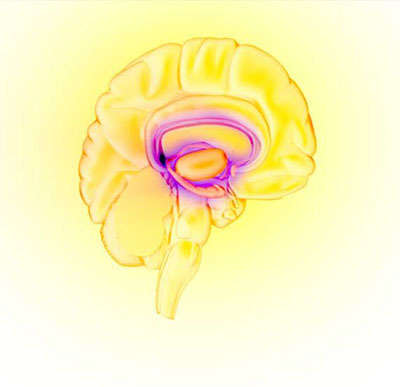
Image showing the dopamine pathways of the human brain
Your reward system doesn’t respond only to your basic needs. As you grow and develop, it also begins to respond to the satisfaction of needs that are important for more abstract goals (like getting a good grade on a test). Any substance that (either directly or indirectly) increases the release of dopamine has the potential to hijack your reward system, making you very motivated to use the substance again.
For some people, the motivation for substance use can begin to outweigh the drive to satisfy other needs (getting enough sleep, eating enough, saving money) leading to harmful effects. As a rule of thumb, the relative addictiveness of a drug is measured by the intensity of the effect it has on the release of dopamine.
What are the symptoms of substance use disorders?
It is important to understand the difference between the effects of drug use (intoxication, withdrawal, various physical and psychological health problems) and the unique symptoms of a substance use disorder. The positive and negative consequences of substance use vary greatly depending on the specific drug being used, why and how it is being used, and the characteristics of the user. For this reason, substance-specific consequences are not considered symptoms of a substance use disorder.
The primary features of substance use disorders are a mixture of cognitive, behavioral, and physiological symptoms, which indicate that a person is continuing to use a substance despite significant substance-related problems.
| Substance | Substance-specific negative consequences | Substance use disorder |
|---|---|---|
| Tobacco | Heart and lung disease Continuing to use a substance (due to being unwilling or unable to stop) despite having significant negative physical, mental, or social consequences as a result of substance use. This applies to all substances listed. | Cancer |
| Lost productivity at work due to needing smoke breaks. | ||
| Turned down for a date because you smoke | ||
| Alcohol | Hangover Embarrassing yourself while drunk at a party Intoxication-related injury (falling down, drunk-driving accident, etc.) | Liver disease |
| Cannabis | Problems with work, school, or police as a result of use | Intoxication-related injury (falling down, high driving accident, etc.) |
| Depression; lack of motivation | Drug-induced psychosis |
The symptoms of substance use disorders fall into four categories: impaired control, social impairment, risky use, and pharmacological criteria.
Impaired control over substance use
• Taking a substance in larger amounts or for a longer period of time than was originally intended
• Persistent desire or unsuccessful efforts to cut down or control substance use
• Spending a large amount of time obtaining, using, or recovering from the effects of substance use
• Intense desire or urge to use a substance (craving), especially while in places where the substance was previously obtained or used
Social impairment
• Recurrent substance use resulting in a failure to fulfill duties at work, school, or home
• Continued substance use despite persistent or recurrent social problems caused or made worse by the effects of substance use
• Giving up or reducing important social, occupational, or recreational activities because of substance use
Risky use
• Recurrent substance use in situations where it is physically hazardous
• Continued substance use despite persistent or recurrent physical or psychological health problems likely resulting from substance use
Pharmacological criteria
Experiencing tolerance by either:
• Needing to use an increased amount of a substance to achieve the same effects
• Having diminished effects with continued use of the same amount of a substance
Experiencing withdrawal by either:
• The characteristic withdrawal syndrome for the particular substance (the exact presentation of withdrawal is different for various substances)
• Taking the substance to relieve or avoid the symptoms of withdrawal
To be diagnosed with a substance use disorder, a person must show a problematic pattern of substance use, manifesting in at least two of the above symptoms during a 12-month period. As a general rule, having two to three symptom qualifies as a mild disorder, four to five qualifies as moderate, and six or more qualifies as severe.
What causes substance use disorders?
There is no single cause of substance use disorders. Like most other diseases, there are many factors that influence a person’s vulnerability to developing a substance use disorder.
• Genetics/biological: It is estimated that genes account for 40-60% of a person’s vulnerability to developing a substance use disorder. However, this doesn’t mean that there is an addiction gene, but rather that combinations of many genes (as well as other biological factors) may work together to result in a person being more likely to use substances in excess. For example, a person who is biologically predisposed to have a weak dopamine-reward response may be more likely to overuse drugs that cause intense dopamine release.
• Environmental: Growing up in a chaotic home; living in a neighborhood where drugs are easily available; and having family members, friends, or peers who abuse alcohol or other drugs have all been linked to the development of
substance use disorders. As is the case with genetic factors, these environmental factors likely don’t directly cause a disorder, but instead may increase a person’s vulnerability.
• Developmental: A person’s stage of physical and mental development plays a large role in their vulnerability to developing a substance use disorder. While drug use at any age can be risky, people who begin using drugs before or during adolescence (when the brain is still developing) are at a much higher risk for developing a substance use disorder.
How common are substance use disorders?
Substance use disorders are relatively common, and affect people from all racial, cultural, and economic groups. Worldwide, the estimated prevalence is between 0-16%. Men are more likely than women to be diagnosed with a substance use disorder.
How can you prevent substance use disorders?
Although the exact cause of substance use disorders is unknown, many prevention strategies have been identified. As was mentioned above, initiating drug use at a young age is a huge risk factor for developing a substance use disorder. Research has shown that prevention programs involving families, schools, communities, and health care providers, aimed at educating young people about the risks of drug use, are effective in reducing the prevalence of substance use disorders.
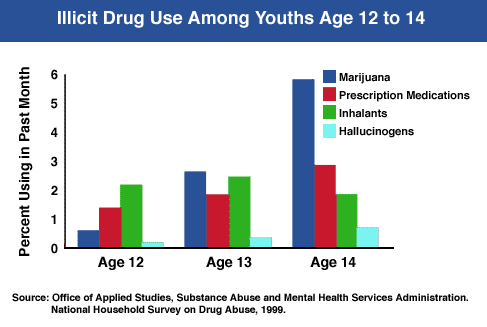
Graph showing the most illicit drug use by age.
How are substances use disorders treated?
Unfortunately, there is no cure for substance use disorders, but there are several effective treatments. Due to the varied presentation of substance use disorders, treatment is tailored to the specific needs of each person. This treatment can take many forms
- 12-step meetings,
- medication support,
- inpatient rehabilitation,
- individual therapy
but must be focused on helping the person stop using drugs, maintain a drug-free lifestyle, and actively functioning in society. As substance use disorders are chronic conditions, most people require long-term or recurrent treatment to maintain recovery.
The Government and The stake holders of the Pharmaceutical Industry has to do more to sanction these killers that are loitering our streets.
More of the ways these drugs can be wiped out completely from the streets are as follows:
- the government should participate in the regulation of imported and manufactured drugs
- stake holders should place proper sanctions on defaulted companies
- clinics and drug stores should insist on seeing prescription before selling
- religious bodies should do more of awareness against these harmful substances
- entertainers, musicians, actors and public figures should be more responsible and curb the act of glorifying drugs
- schools and social centers should monitor and school wards on drug education
- parents and guardians should educate their wards on drug abuse and its effects and also take time to check their kids
from time to time.
With these above steps and efforts, i believe drug an substance abuse will be reduced if not eliminated.
All images from here
@senseibabs January 2018

Jesu... Why dint you submit this to be curated. U'v put in sooo much work in this. Damn. Nice one bro
Two weeks of research😢. How do i submit posts for curation? I dropped it at the usual but you know how cloggy that place is. Thanks for stopping by sir.
Nice talk brother, I wish they know the effects of drug abuse.. May the good Lord help.
The rate at which young ones are consuming drugs in the name of "societal norms" and acceptance , i only hope something is done quickly and effectively.
Congratulations @senseibabs! You have completed some achievement on Steemit and have been rewarded with new badge(s) :
Click on any badge to view your own Board of Honor on SteemitBoard.
For more information about SteemitBoard, click here
If you no longer want to receive notifications, reply to this comment with the word
STOP